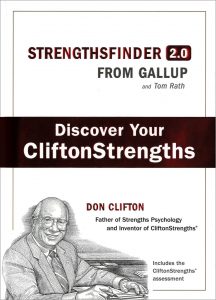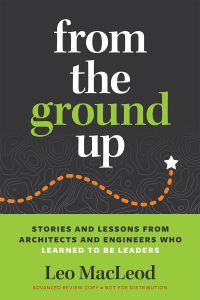Working with others comes in several forms. It may require understanding where one is coming from or where others are coming from. It may also involve transforming oneself to work from a different perspective, i.e., lead. The two books reviewed here provide some of the steps necessary to accomplish either or both.
STRENGTHSFINDER 2.0: DISCOVER YOUR CLIFTONSTRENGTHS
Tom Rath, Gallup Press, 2017, 185 pages, hardcover, $40.
 There are several assessment tools that focus on different things. Myers-Briggs Type Indicator (MBTI), DiSC, and Predictive Index (PI) are familiar tools. These tools are used by management training consultants to help identify how an individual prefers to work and/or or to help others work together. They are helpful tools for individual assessment and are frequently used that way as well.
There are several assessment tools that focus on different things. Myers-Briggs Type Indicator (MBTI), DiSC, and Predictive Index (PI) are familiar tools. These tools are used by management training consultants to help identify how an individual prefers to work and/or or to help others work together. They are helpful tools for individual assessment and are frequently used that way as well.
Another tool is the Strengthsfinder 2.0, from CliftonStrengths developed by Don Clifton, is a method to identify a person’s strengths through an on-line assessment tool. The results then provide information so the individual can build on those strengths. There have been several presenters at APPA events, including Marcus Buckingham, who have applied strengths to management training concepts and presentations.
The book is mostly a short description of the method and a listing of the 34 strengths with descriptive material for each. The assessment tool is online and accessible using a unique access code provided in the book. The descriptions of each strength, approximately four pages per strength, are interesting. Since the assessment tool provides the user with five strengths there is some overlap per user. However, studying one’s own strengths is not a good reason to purchase the book. Rather, read all the different strengths and descriptions.
The good news for those working in higher education is that many universities have a course that uses Strengthsfinder either in a psychology course or leadership development course. It also means there may be faculty who can assist with application of the tool; a great way to leverage resources to improve the facilities organization with a limited budget.
FROM THE GROUND UP: STORIES AND LESSONS FROM ARCHITECTS AND ENGINEERS WHO LEARNED TO BE LEADERS
Leo MacLeod, Pie House Publishing, Tigard, OR, 2022, Hardcover, $30, softcover, $20, e-book, $9.
Moving from a position that must be focused on details to one requiring a big picture perspective can be difficult. The personal characteristics can be very different. While this is not necessarily new or unusual, think about it from a different perspective.
 Architects and engineers are designers, they tell their clients what the solution is with some significant detail. In other words, they are focused on being an expert and knowing the answer. The answer may change over time either as more information is known or as trends change but it’s still the answer. Now consider a leader. A leader is not necessarily a person with the answers but is really someone who knows how to set a direction and get others to identify the answers. The leader may find the answers acceptable and approve them but is not involved in the details the way a designer is.
Architects and engineers are designers, they tell their clients what the solution is with some significant detail. In other words, they are focused on being an expert and knowing the answer. The answer may change over time either as more information is known or as trends change but it’s still the answer. Now consider a leader. A leader is not necessarily a person with the answers but is really someone who knows how to set a direction and get others to identify the answers. The leader may find the answers acceptable and approve them but is not involved in the details the way a designer is.
Making the transition from designer to leader is addressed by From the Ground Up. Written by a coach who has helped professionals make the transition from detail-focused designer to big-picture thinking leader has spelled out the four steps to make the transition. In addition to identifying four steps, there are several examples in each step and stories that demonstrate how a person executed the step successfully. Each step or intermediate step ends with a ‘Try It’ section of mini-steps that outline what is needed to execute each task successfully. Accompanied by graphics or bullet points, each step is outlined clearly and concisely.
There are many people in facilities management who have come into the position after working as a consultant interested in advancing into a leadership role. While there is no single approach or solution to move from a doer role to a leader role, From the Ground Up is a good guide that is easy to read and can be used as a reference in support of a leader who needs occasional reminders of what to do when faced with a familiar but challenging situation.
Ted Weidner is professor of engineering practice at Purdue University, West Lafayette, IN, and consults on facilities management issues primarily for educational organizations. He can be reached at [email protected]. If you would like to write a book review, please contact Ted directly.
Bookshelf
Book reviews on current publications relevant to the profession, trends, and working environment of facilities and educational managers and professionals. To contribute a book review, contact Ted Weidner, field editor of this column.
See all Bookshelves.


